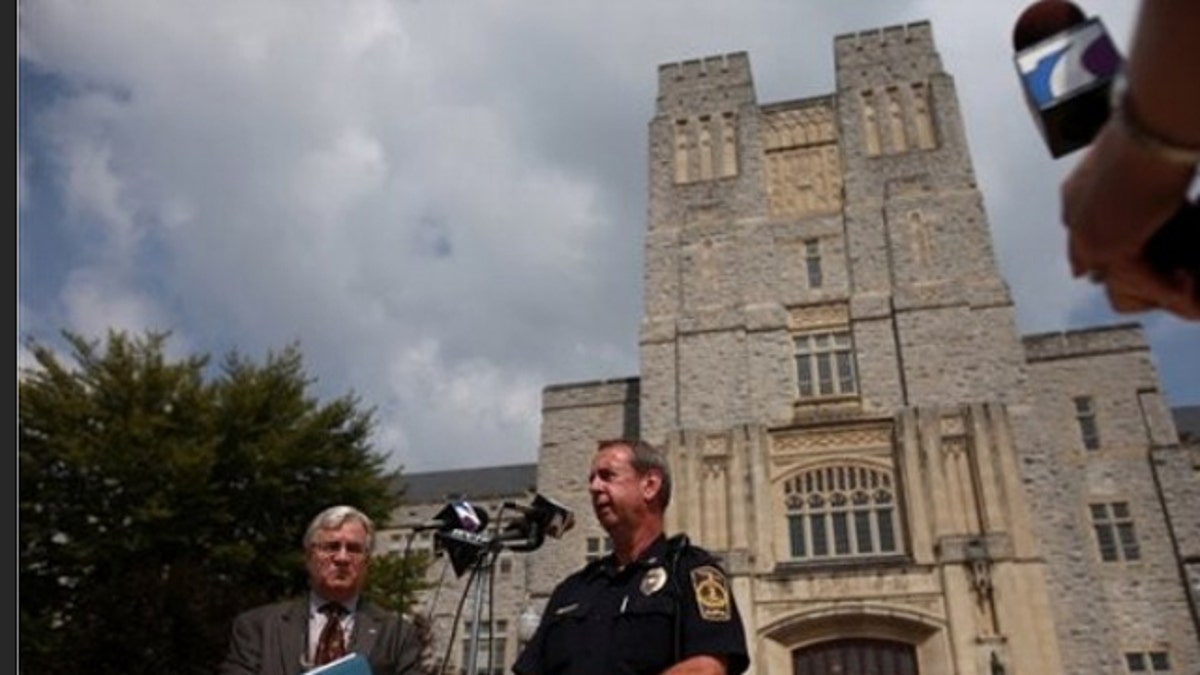
Virginia Tech has experienced its fair share of campus emergencies. (AP)
With students back on campus for the Fall semester, concerned parents are beginning to wonder — are schools doing enough to protect students?
Since the 2007 Virginia Tech attack -- where a two-hour long gap between the dorm killing and the classroom shoot-out let a killer take 32 innocent lives -- institutions across the country have reorganized and revamped their emergency alert systems.
Many have added extra communication methods to their systems since that massacre, some specially designed to overcome cellular dead zones in, say a basement laboratory or the remote corner of an underground library, to ensure students will still receive text-based alerts.
“Our paging protocol allows universities to alert all students simultaneously and since we transmit our wireless messages ... at 250 watts, there is virtually nowhere on campus that our messages would not be received,” Roy Pottle Chairman and CEO of IntelliGuard Systems told FoxNews.com.
Despite the 1990 Jeanne Clery Act -- a federal law that insists schools give timely warnings of crimes that represent a threat to the safety of students -- many believe the 2007 massacre painted a picture of a botched notification system. School administrators missed the chance to warn students in a timely manner, they say:
* According to the report, police went to the scene of the Virginia Tech dorm shooting at 7:24 a.m.
* At 7:57 a.m. police notified the office of the executive vice president about the shooting. The President of the school was notified and at 8:25 a.m. a meeting took place to discuss how best to notify students and faculty.
* Finally, at 9:26 a.m. the university notified students and staff by e-mail about the shooting.
“One obstacle that I have seen campuses face are when the critical incident response team is too large and fails to properly address an incident or does not alert the necessary parties,” Alison Kiss, executive director of Security on Campus told FoxNews.com.
The University of Southern California uses multiple communication channels to get the word out quickly to students and faculty. Their system allows officials to contact students via text message, voice-mail and e-mail.
“All schools should rely on a layered, not singular system. Without additional systems or processes when needed, a significant incident may occur as a result of the single layer approach to notification,” Chief Carey Drayton, executive director of public safety at the University of Southern California, told FoxNews.com.
In order to accommodate institutions new push for better notifications, next-generation emergency-alert and notification companies emerged around the nation.
New service providers like Send Word Now use multi-modal alert and response services that feature communication devices familiar to students.
“Send Word Now uses multiple modalities to alert people in the event of an emergency. Modalities include voice alerts to land lines and cell phones, text alerts, email, BlackBerry PIN messages, desktop alerts, and pagers and can send automated updates via RSS feeds to websites such as Facebook and Twitter,” Tony Schmitz CEO of Send Word Now told FoxNews.com.
As technology continues to improve, companies will offer new products and services, but ultimately the universities will determine which systems will work best for their schools.
Robert Matusick director of public safety at Stetson University told FoxNews.com, “I think they can always be better, it’s about how to build a better mouse trap — and we want the best technology we can get our hands on.”
